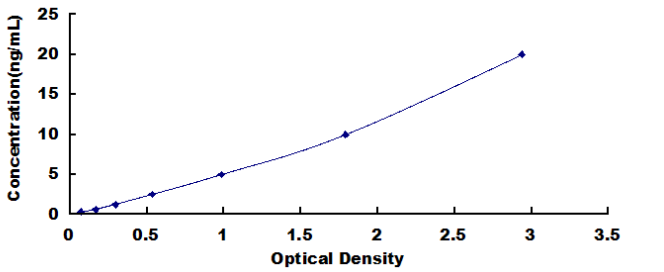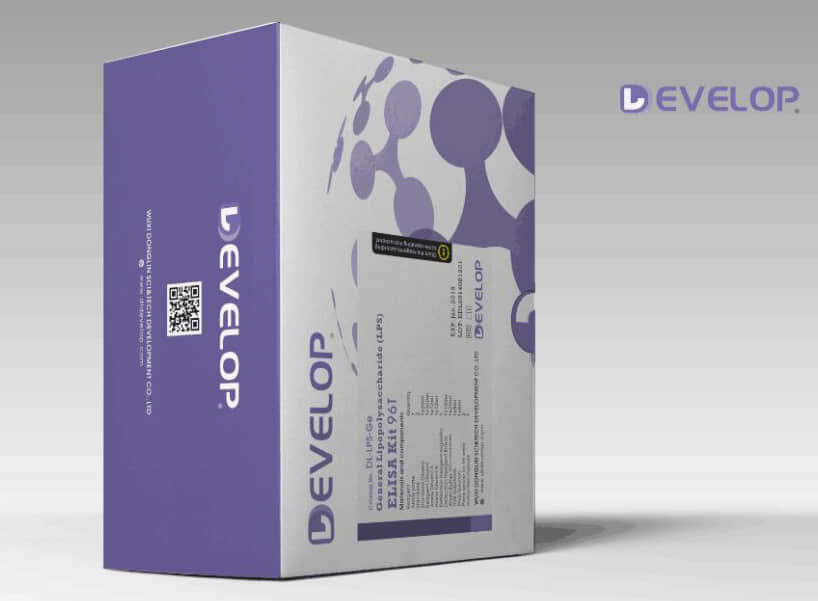Human Alkaline Phosphatase, Placental Like Protein 2 (ALPPL2) ELISA Kit


two product lines: Traditional ELISA Kit and Ready-to-Use ELISA Kit.


1.Overview:
Other names:ALPG; GCAP; ALP-1; Alkaline phosphatase Nagao isozyme; Germ cell alkaline phosphatase; Placental alkaline phosphatase-like
Function: In most mammals there are four different isozymes: placental, placental-like, intestinal and tissue non-specific (liver/bone/kidney).
Sequence:
50 MQGPWVLLLL GLRLQLSLGI IPVEEENPDF WNRQAAEALG AAKKLQPAQT 100 AAKNLIIFLG DGMGVSTVTA ARILKGQKKD KLGPETFLAM DRFPYVALSK 150 TYSVDKHVPD SGATATAYLC GVKGNFQTIG LSAAARFNQC NTTRGNEVIS 200 VMNRAKKAGK SVGVVTTTRV QHASPAGAYA HTVNRNWYSD ADVPASARQE 250 GCQDIATQLI SNMDIDVILG GGRKYMFPMG TPDPEYPDDY SQGGTRLDGK 300 NLVQEWLAKH QGARYVWNRT ELLQASLDPS VTHLMGLFEP GDMKYEIHRD 350 STLDPSLMEM TEAALLLLSR NPRGFFLFVE GGRIDHGHHE SRAYRALTET 400 IMFDDAIERA GQLTSEEDTL SLVTADHSHV FSFGGYPLRG SSIFGLAPGK 450 ARDRKAYTVL LYGNGPGYVL KDGARPDVTE SESGSPEYRQ QSAVPLDGET 500 HAGEDVAVFA RGPQAHLVHG VQEQTFIAHV MAFAACLEPY TACDLAPRAG 530 TTDAAHPGPS VVPALLPLLA GTLLLLGTAT AP
INTENDED USE
The kit is a sandwich enzyme immunoassay for the in vitro quantitative measurement of ALPPL2 in human tissue homogenates or other biological fluids.
0.312-20ng/mL. The standard curve concentrations used for the ELISA’s were 20ng/mL, 10ng/mL, 5ng/mL, 2.5ng/mL, 1.25ng/mL, 0.625ng/mL, 0.312ng/mL.
SENSITIVITY
The minimum detectable dose of ALPPL2 is typically less than 0.113ng/mL.
The sensitivity of this assay, or Lower Limit of Detection (LLD) was defined as the lowest protein concentration that could be differentiated from zero. It was determined by adding two standard deviations to the mean optical density value of twenty zero standard replicates and calculating the corresponding concentration.
SPECIFICITY
This assay has high sensitivity and excellent specificity for detection of ALPPL2.
No significant cross-reactivity or interference between ALPPL2 and analogues was observed.
You can reference link of the kit as following
https://dldevelop.com/Research-reagent/dl-alppl2-hu.html
https://www.dldevelop.com/uploadfile/data/DL-ALPPL2-Hu.pdf
Introduction
| Item | Standard | Test | |
| Description |
The kit is a sandwich enzyme immunoassay for the in vitro quantitative measurement of ALPPL2 in human tissue homogenates or other biological fluids. |
Conform | |
| Identification | Colorimetric | Positive | |
| Composition | Traditional ELISA Kit | Ready-to-Use ELISA KIT | Conform |
| Pre-coated, ready to use 96-well strip plate 1 | Pre-coated, ready to use 96-well strip plate 1 | ||
| Plate sealer for 96 wells 2 | Plate sealer for 96 wells 2 | ||
| Standard 2 | Standard 2 | ||
| Diluents buffer 1×45mL | Standard Diluent 1×20mL | ||
| Detection Reagent A 1×120μL | Detection Solution A 1×12mL | ||
| Detection Reagent B 1×120μL | Detection Solution B 1×12mL | ||
| TMB Substrate 1×9mL | TMB Substrate 1×9mL | ||
| Stop Solution 1×6mL | Stop Solution 1×6mL | ||
| Wash Buffer (30 × concentrate) 1×20mL | Wash Buffer (30 × concentrate) 1×20mL | ||
| Instruction manual 1 | Instruction manual 1 | ||
Test principle
The microtiter plate provided in this kit has been pre-coated with an antibody specific to the index. Standards or samples are then added to the appropriate microtiter plate wells with a biotin-conjugated antibody preparation specific to the index. Next, Avidin conjugated to Horseradish Peroxidase (HRP) is added to each microplate well and incubated. After TMB substrate solution is added, only those wells that contain the index, biotin-conjugated antibody and enzyme-conjugated Avidin will exhibit a change in color. The enzyme-substrate reaction is terminated by the addition of sulphuric acid solution and the color change is measured spectrophotometrically at a wavelength of 450nm ± 10nm. The concentration of the index in the samples is then determined by comparing the O.D. of the samples to the standard curve.
Recovery
Matrices listed below were spiked with certain level of recombinant ALPPL2 and the recovery rates were calculated by comparing the measured value to the expected amount of the index in samples.
| Matrix | Recovery range (%) | Average(%) |
| serum(n=5) | 81-93 | 86 |
| EDTA plasma(n=5) | 80-97 | 88 |
| heparin plasma(n=5) | 90-101 | 95 |
Linearity
The linearity of the kit was assayed by testing samples spiked with appropriate concentration of the index and their serial dilutions. The results were demonstrated by the percentage of calculated concentration to the expected.
| Sample | 1:2 | 1:4 | 1:8 | 1:16 |
| serum(n=5) | 82-96% | 83-98% | 81-99% | 93-101% |
| EDTA plasma(n=5) | 88-101% | 86-95% | 90-102% | 80-93% |
| heparin plasma(n=5) | 80-91% | 82-90% | 95-104% | 79-95% |
Precision
Intra-assay Precision (Precision within an assay): 3 samples with low, middle and high level the index were tested 20 times on one plate, respectively.
Inter-assay Precision (Precision between assays): 3 samples with low, middle and high level the index were tested on 3 different plates, 8 replicates in each plate.
CV(%) = SD/meanX100
Intra-Assay: CV<10%
Inter-Assay: CV<12%
Stability
The stability of ELISA kit is determined by the loss rate of activity. The loss rate of this kit is less than 5% within the expiration date under appropriate storage conditions.
Note:
To minimize unnecessary influences on the performance, operation procedures and lab conditions, especially room temperature, air humidity and incubator temperatures should be strictly regulated. It is also strongly suggested that the whole assay is performed by the same experimenter from the beginning to the end.
Assay procedure summary
1. Prepare all reagents, samples and standards;
2. Add 100µL standard or sample to each well. Incubate 2 hours at 37℃;
3. Aspirate and add 100µL prepared Detection Reagent A. Incubate 1 hour at 37℃;
4. Aspirate and wash 3 times;
5. Add 100µL prepared Detection Reagent B. Incubate 1 hour at 37℃;
6. Aspirate and wash 5 times;
7. Add 90µL Substrate Solution. Incubate 15-25 minutes at 37℃;
8. Add 50µL Stop Solution. Read at 450nm immediately.
Order or get a Quote
We will reply you within 24 hours!














